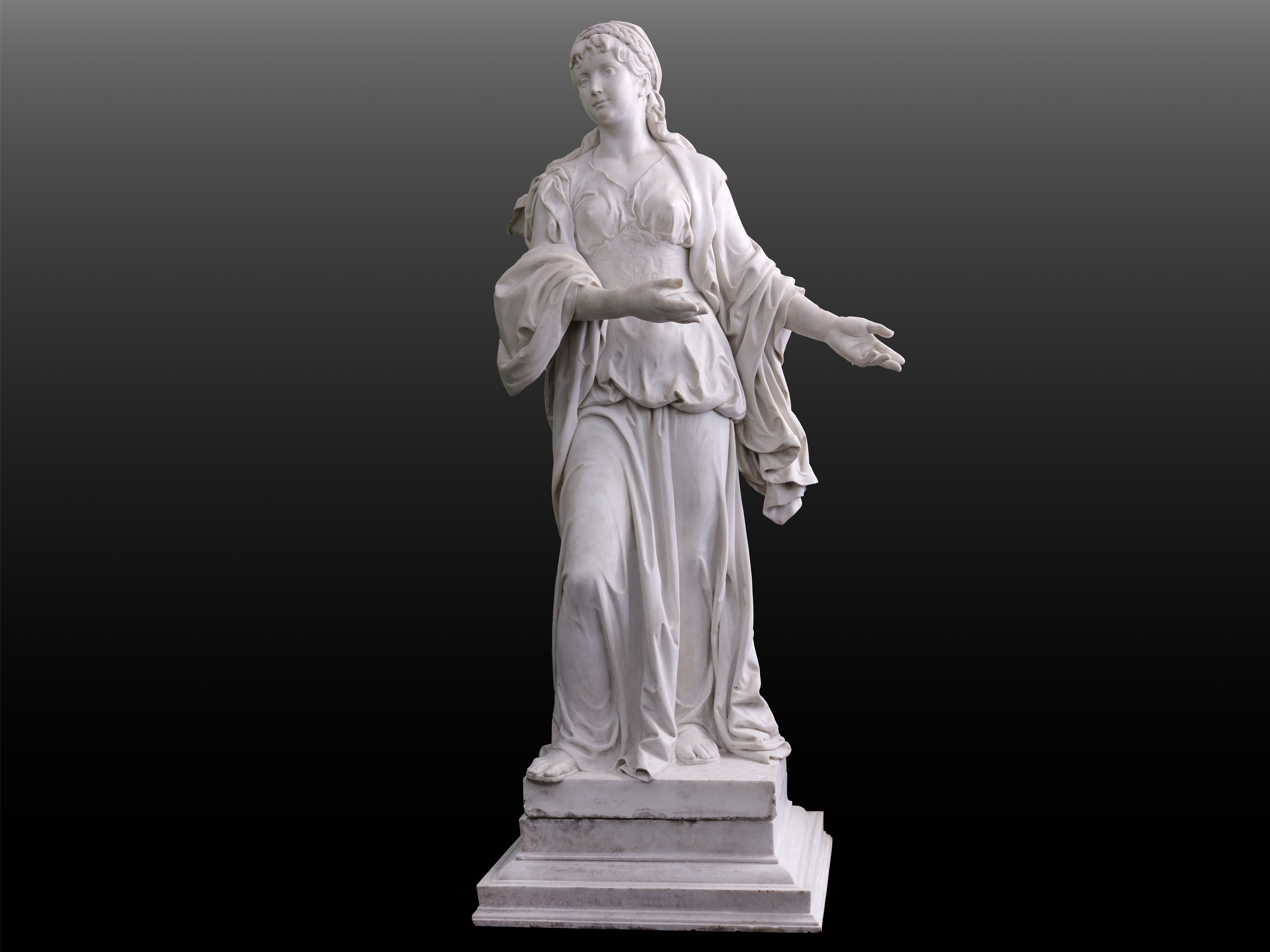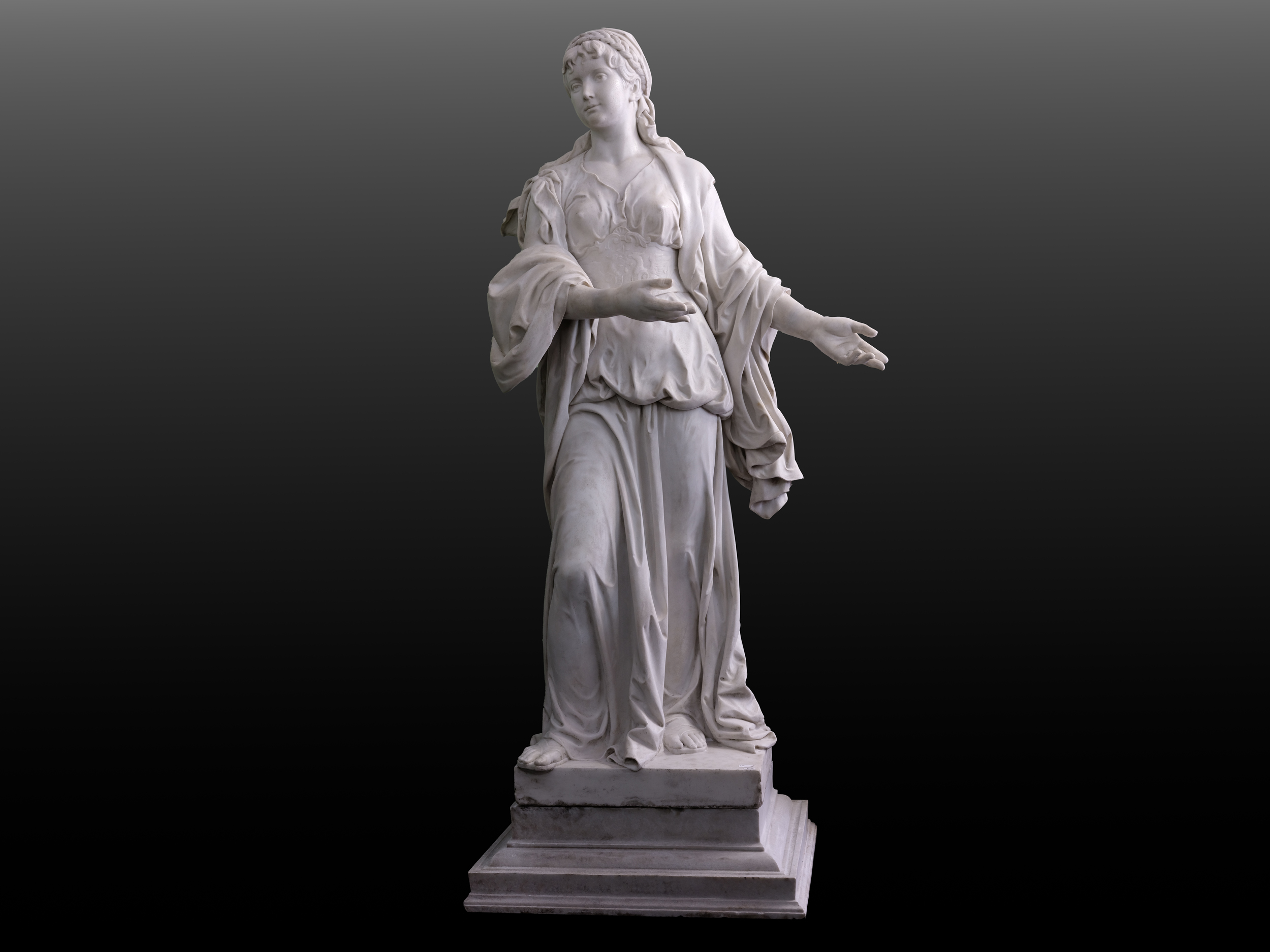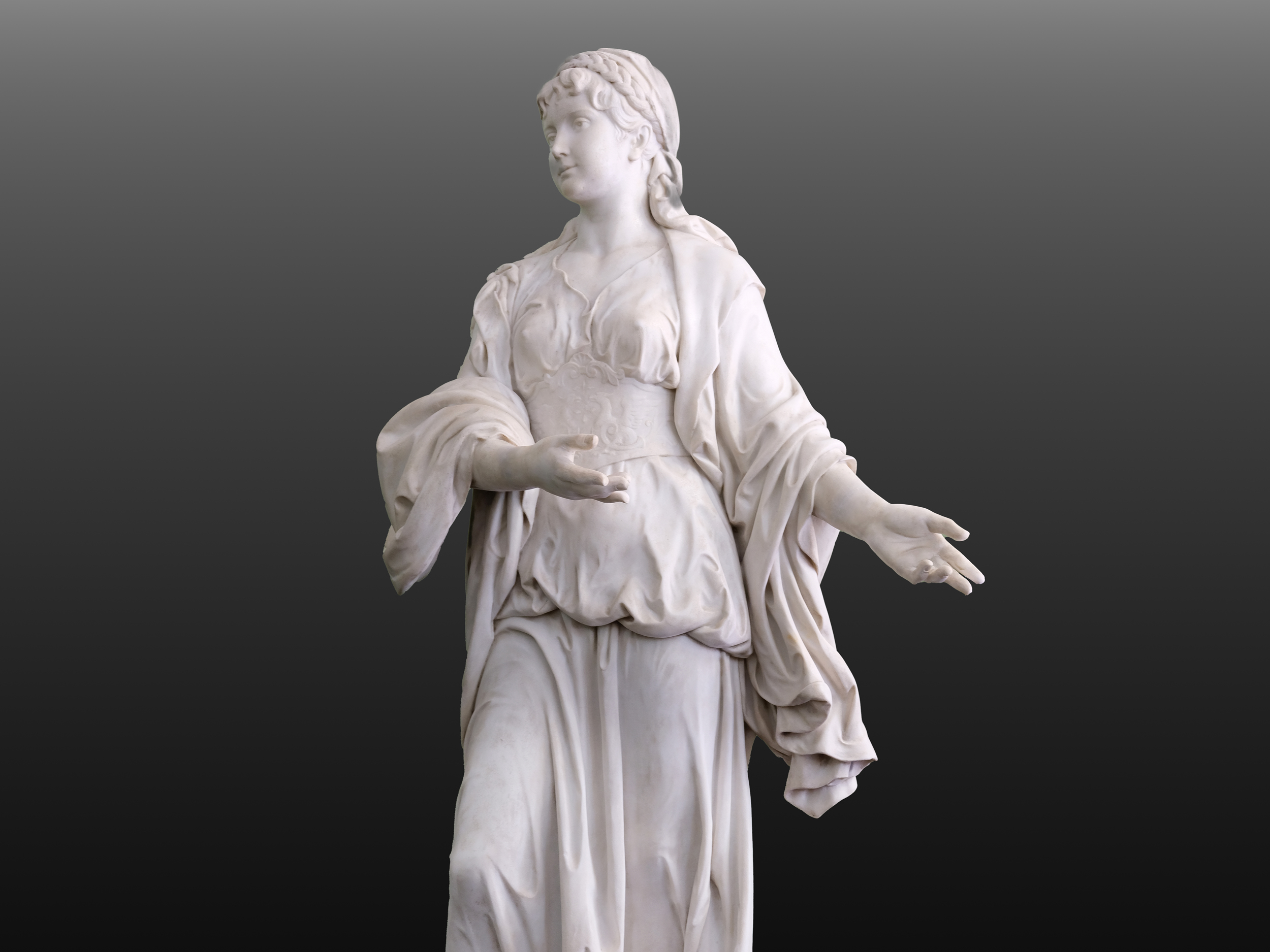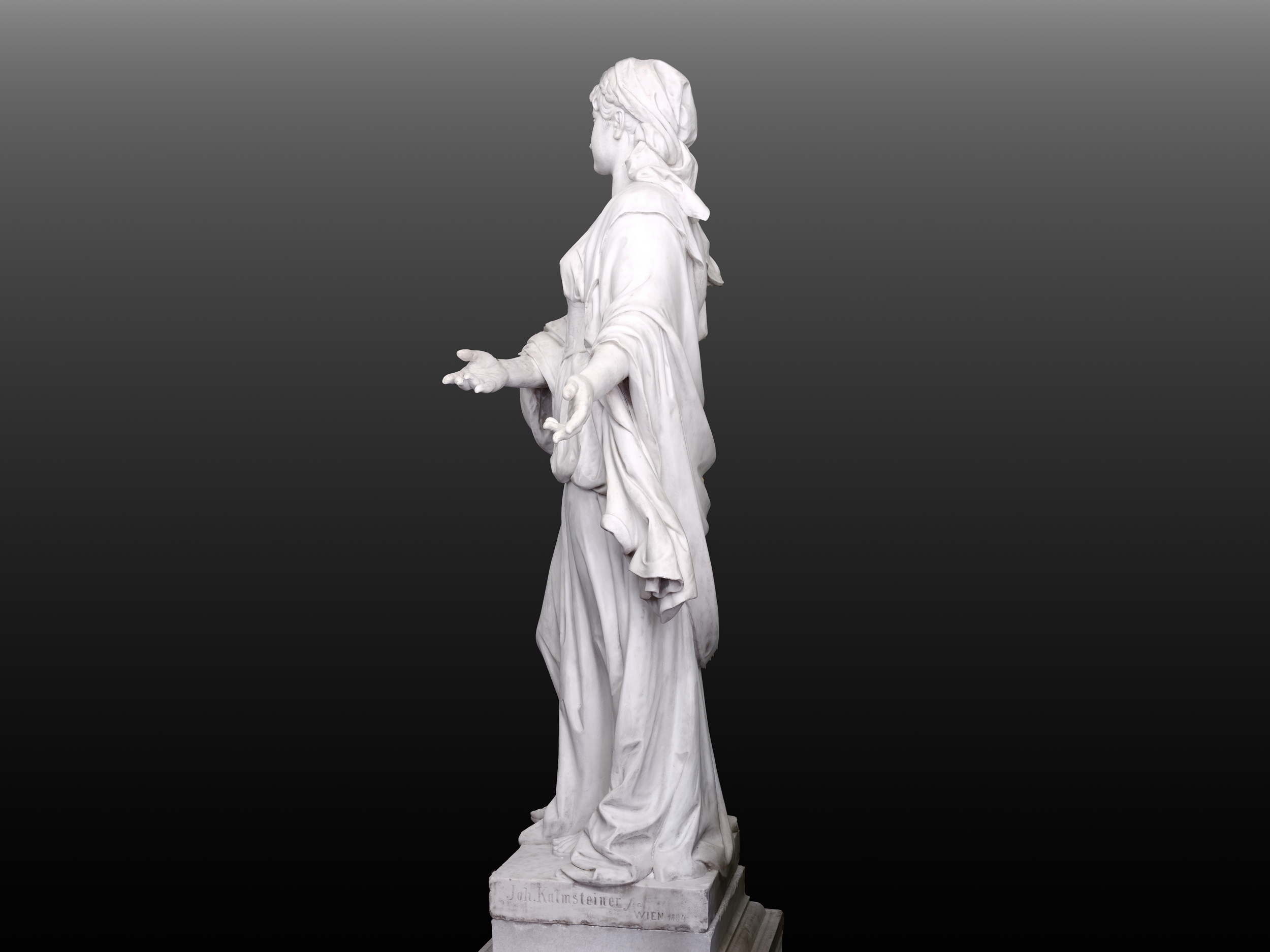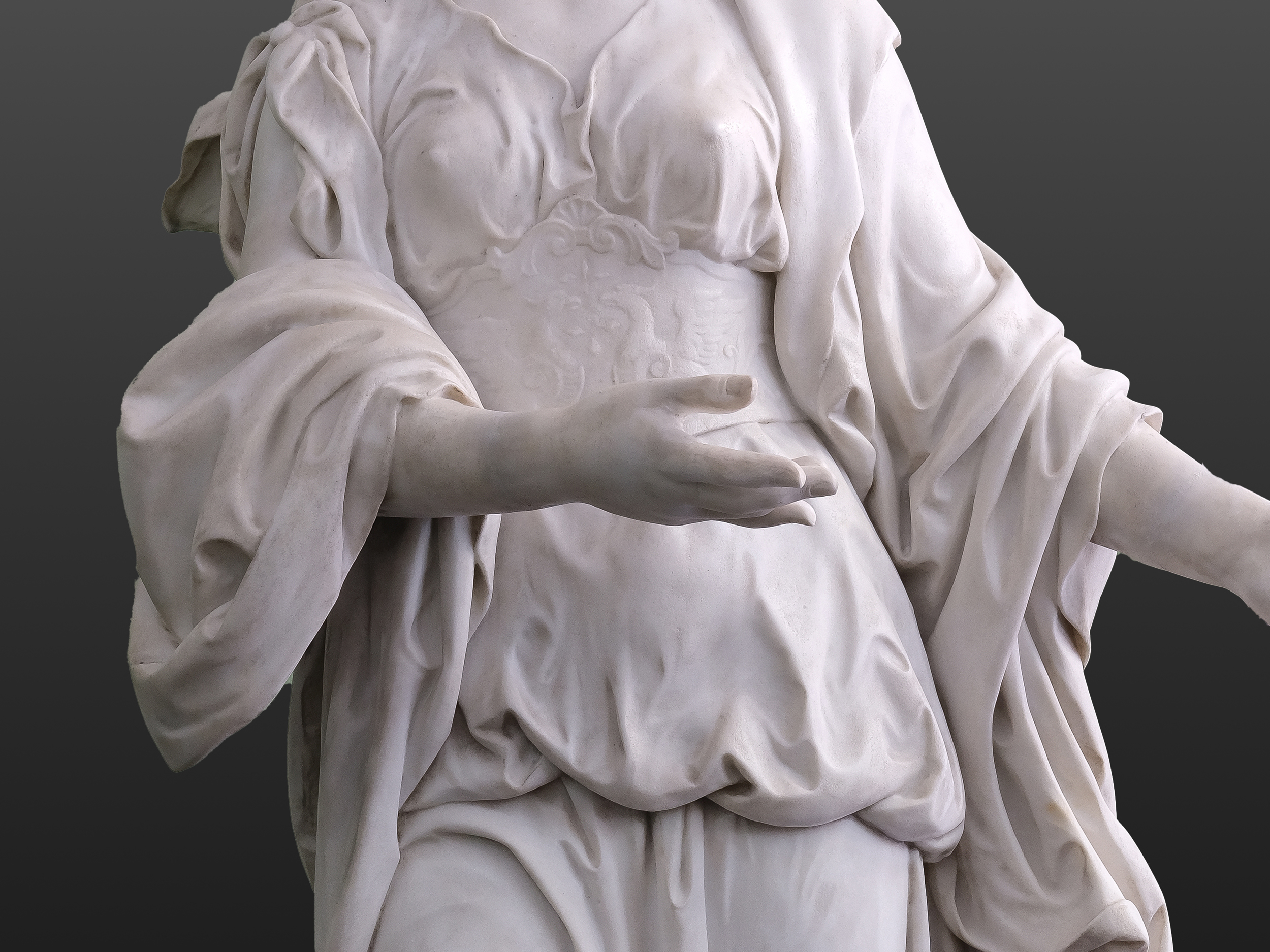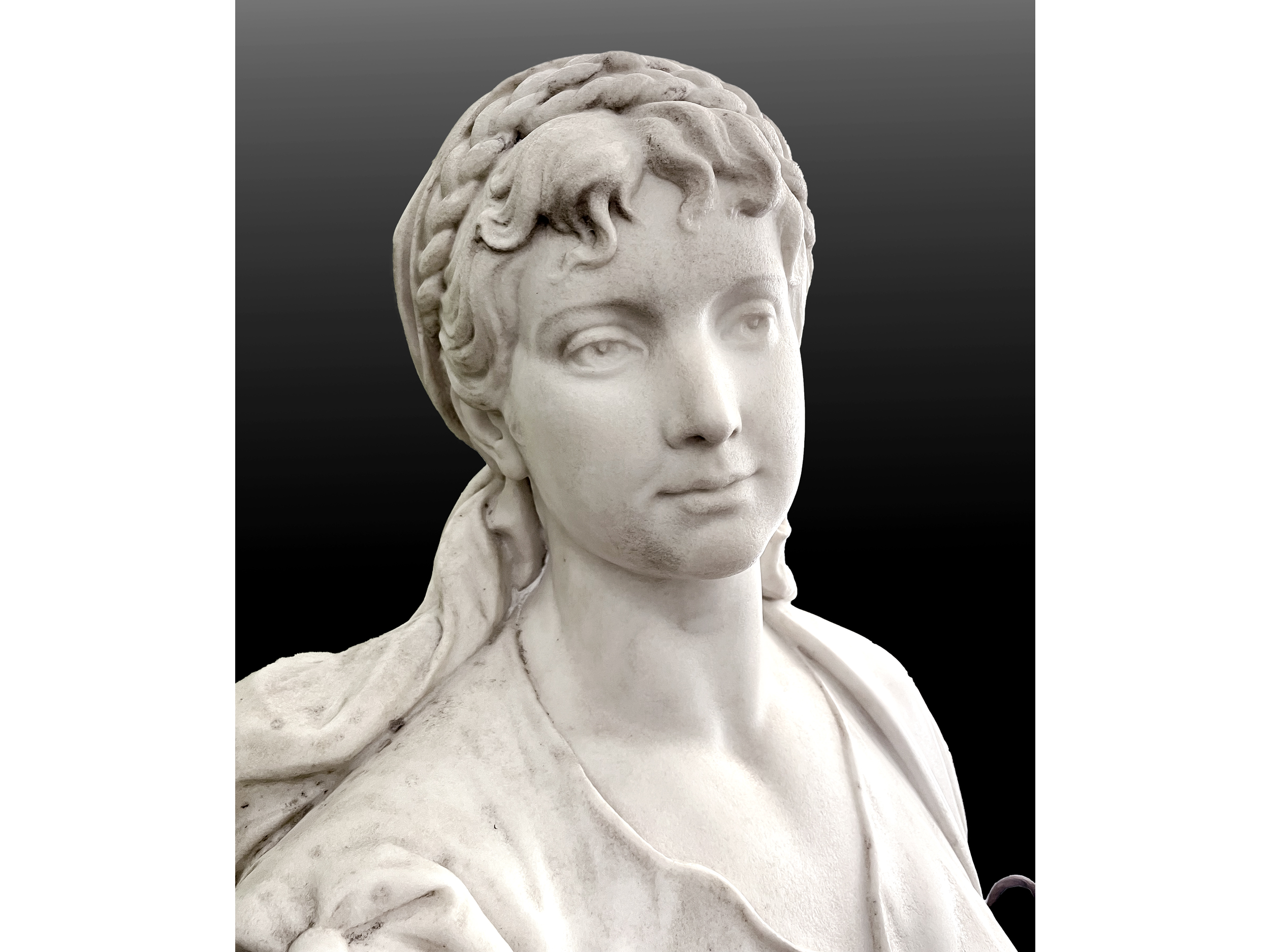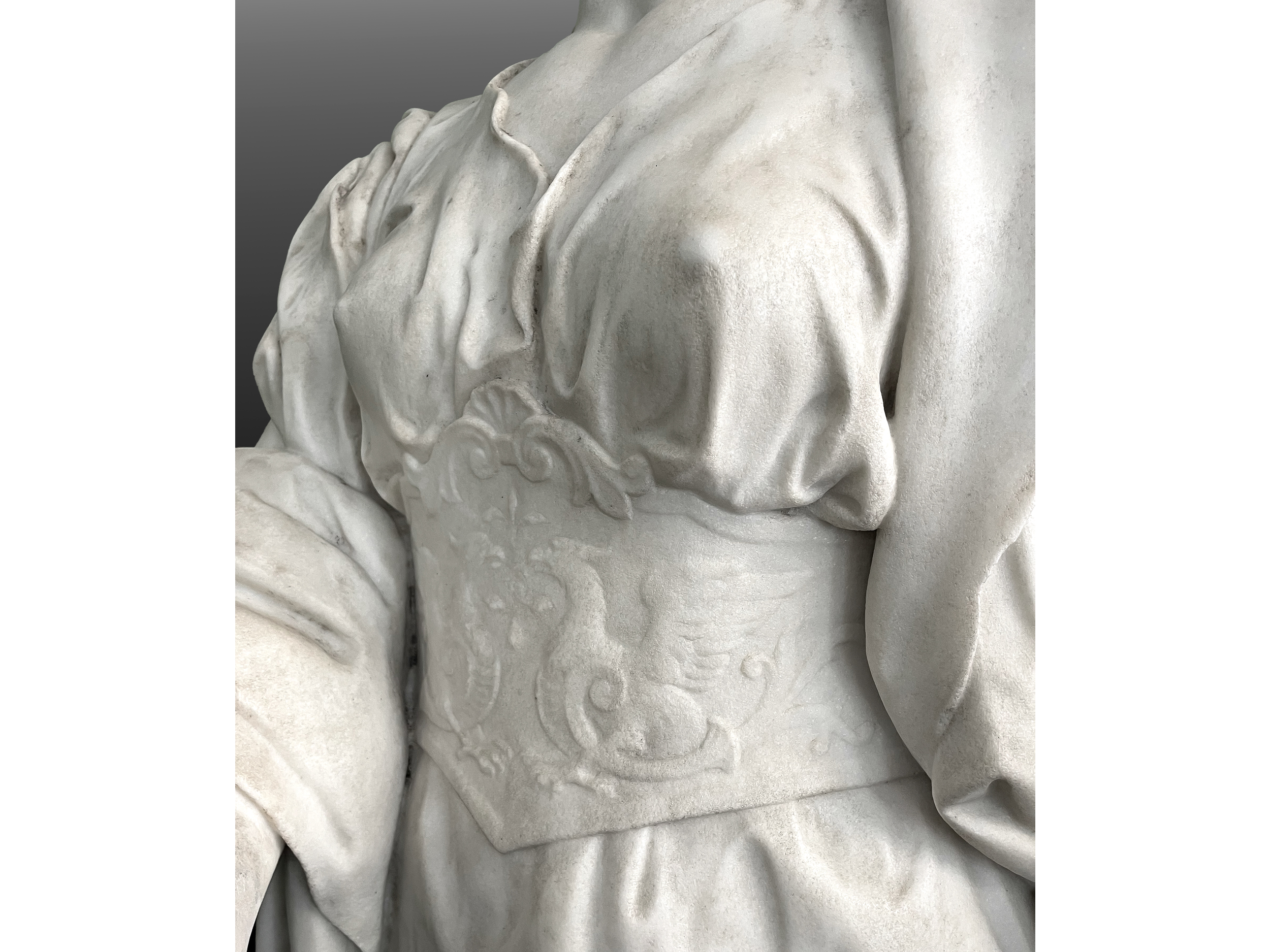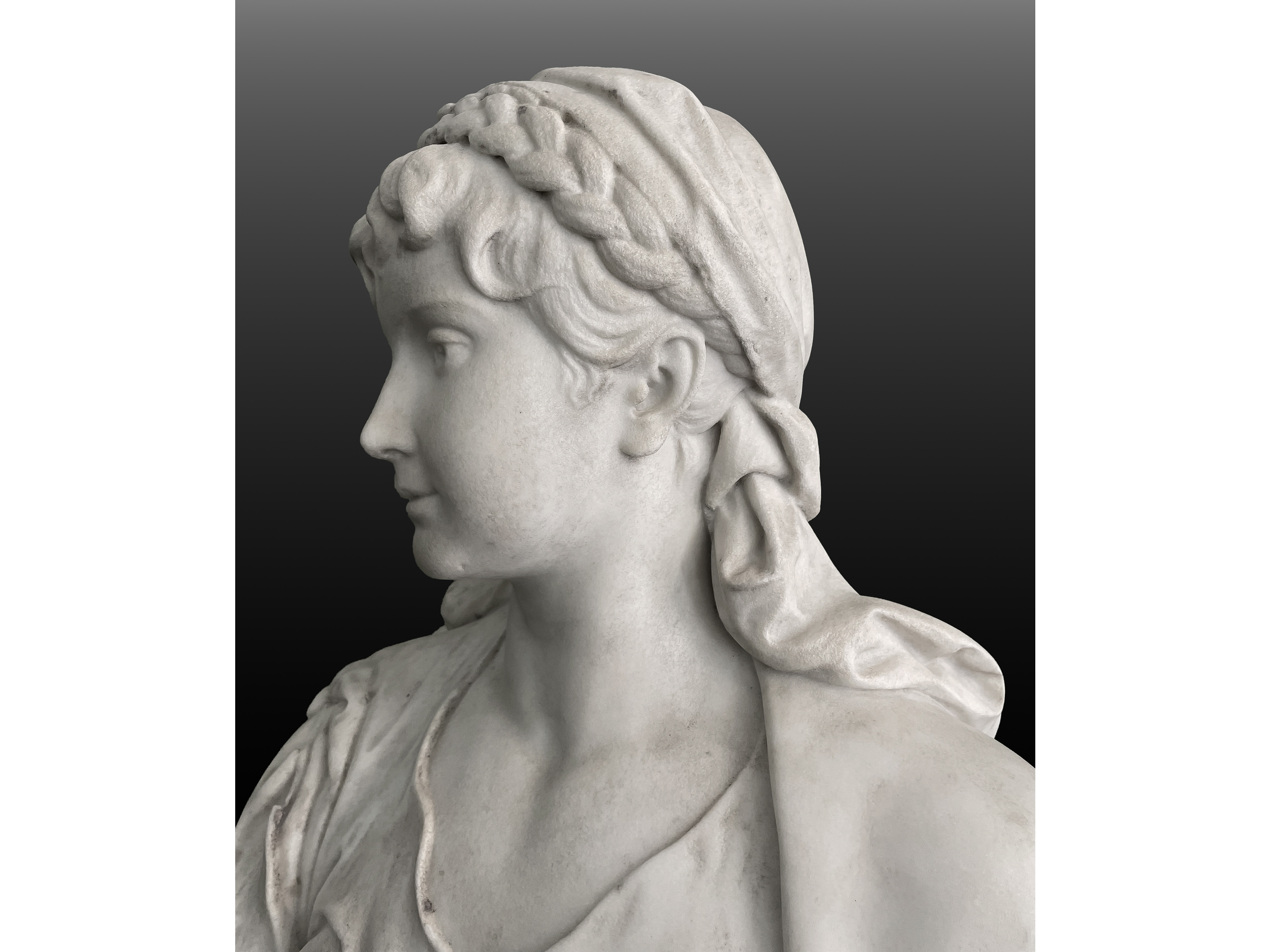Johann Kalmsteiner
19th Tiberius Auction
Johann Kalmsteiner
Starting price:
€ 8.000
- USD: 9.232 $
- GBP: 7.028 £
Estimated price: € 15.000 / 30.000
Johann Kalmsteiner
Sarnthein 1845 – 1897 Vienna
Marble figure of a Kore
White marble
Height with base 200 cm
Signed and dated Vienna 1894 on the base
Johann Kalmsteiner was an Austrian sculptor of the Vienna Ringstrasse period, whose work stands between academic classicism and the historicism of the late 19th century. After training at the Academy of Fine Arts in Vienna, he initially worked alongside important masters such as Carl Kundmann and Edmund von Hellmer before developing his own artistic style. Kalmsteiner preferred marble and alabaster as materials and devoted himself in particular to idealized female figures, allegories, and mythological figures. His works are characterized by extraordinary technical precision, a sure sense of proportion, and a finely balanced equilibrium between idealizing austerity and sensual vitality.
Since ancient times, the kore—the representation of a young, clothed woman—has embodied the ideal of feminine grace, purity, and cultic dignity. In Greek art of the 6th century BC, it served as a votive offering or funerary figure, often representing goddesses, priestesses, or noble virgins. Her posture, symmetrical structure, and characteristic, mysterious smile gave the Kore a timeless charisma that gained new popularity in 19th-century European art in the wake of the rediscovery of antiquity. Artists such as Kalmsteiner took up this form in order to combine the classical ideal of beauty with contemporary aesthetic sensibilities.
The marble figure of a Kore presented here, signed and dated Vienna 1894 on the base, is exemplary of this synthesis of antiquity and modernity. In the late Ringstrasse era, Vienna was characterized by a preference for antique themes and technically virtuoso execution. Kalmsteiner’s work fits into this context, but at the same time shows subtle traits of individualization and an almost painterly treatment of the surface, characteristic of the fin de siècle.
The figure shows a young girl standing upright in a richly pleated peplos, the typical ancient garment. The fabric is artfully puffed up at the arms and hips, but falls in soft, close-fitting folds in other places—an effect of the so-called “wet style,” which gently reveals the Kore’s body shape. Her feet, clad in sandals, peek out from under the long robe; the right leg, slightly forward, is vividly expressed under the fabric and lends the figure dynamism. The upper garment is draped over the crook of her right arm, forming a virtuoso, deeply modeled fold, while her left hand points slightly to the side—perhaps as an indication of a once paired or framing arrangement, for example next to an entrance, so that she could show the way to those entering. Under her left arm, the fabric falls in rich, deep folds down to her knee.
Kalmsteiner’s careful updating of the ancient type is remarkable: over the peplos, the young woman appears to be wearing a tight-fitting bodice or corset – a fashionable element of the 1890s that makes the figure appear both classical and contemporary. A braided ribbon wraps around her head, beneath which long, carefully crafted curls fall. Her face is idealized, with a gentle smile and a slight glance to the right, lending the composition a subtle asymmetry and liveliness.
This Kore occupies an important position in Johann Kalmsteiner’s oeuvre: it demonstrates his mastery of marble and his ability to translate ancient forms into the language of his own time. Unlike his allegorical or religious figures, this work is less narrative and more of a homage to pure form, to the ideal of beauty itself. It combines academic perfection, technical virtuosity, and the quiet, refined melancholy that characterizes many works of Viennese art around 1900.

